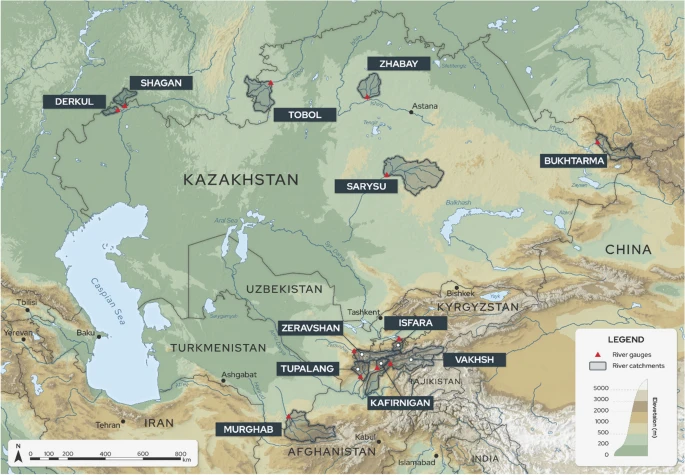Abstract
This study investigates the attribution of climate change to trends in river discharge during six decades from 1955 until 2014 in 12 selected river catchments across six Central Asian countries located upstream of the main rivers. For this purpose, the semi-distributed eco-hydrological model SWIM (Soil and Water Integrated Model) was firstly calibrated and validated for all study catchments. Attributing climate change to streamflow simulation trends was forced by factual (reanalysis) and counterfactual climate data (assuming the absence of anthropogenic influence) proposed in the framework of the ISIMIP (Inter-Sectoral Impact Model Intercomparison Project) or ESM without anthropogenic forcing that were firstly tested and then compared. The trend analysis was performed for three variables: mean annual discharge and high flow (Q5) and low flow (Q95) indices. The results show that trends in the annual and seasonal discharge could be attributed to climate change for some of the studied catchments. In the three northern catchments (Derkul, Shagan, and Tobol), there are positive trends, and in two catchments (Sarysu and Kafirnigan), there are negative streamflow trends under the factual climate, which could be attributed to climate change. Also, our analysis shows that the average level of discharge in Murghab has increased during the historical study period due to climate change, despite the overall decreasing trend during this period. In addition, the study reveals a clear signal of shifting spring streamflow peaks in all catchments across the study area.
https://link.springer.com/article/10.1007/s10584-023-03673-3

